Content
This is the html that we pulled from the URL. It’s been sanitized, so it will only contain safe tags.
Google's reputation and influence within the technology industry can't be understated. The company is unflinching in its desire to improve people's lives by offering accessible, empowering products and services.
Google has focused its efforts in the last twelve months and proven that for every market it enters or competes in, it's prepared to be patient and innovate until it gains a respectable piece of market share.
View this whole story on one page.
Android
Google's (now formerly) Vice President for Android Product Management, Hugo Barra, waited until July this year to introduce Android 4.3, a comparatively minor release that added support for Bluetooth Low Energy, referred to as Bluetooth Smart and OpenGL ES 3.0, as well as a new set of DRM APIs that standardized encryption for full HD, 1080p content.
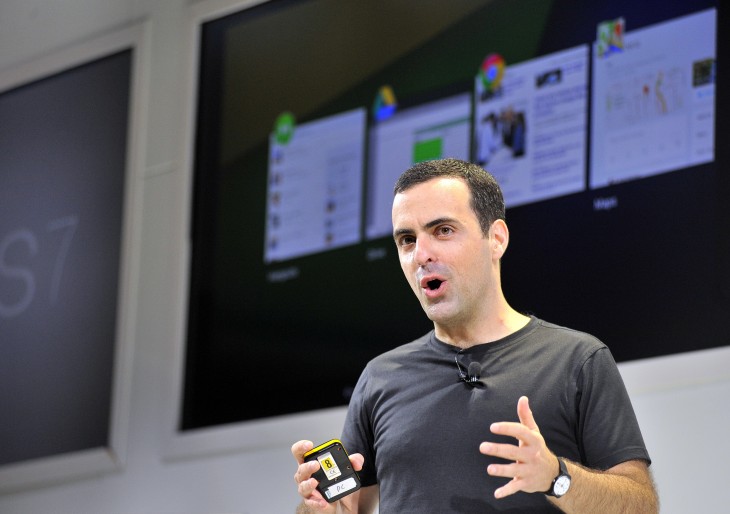
These might not sound particularly thrilling on paper, but their effect on the platform was notable. Android had lacked a default Bluetooth framework in the past, so Bluetooth Smart made it easier for developers to set up a line of communication between their peripheral and an Android device.
The new DRM APIs, meanwhile, were picked up immediately by Netflix so it could offer its subscribers 1080p streaming for the first time in its Android app.
Support for OpenGL ES 3.0 offered accelerated 3D graphics and higher fidelity graphic rendering, resulting in more realistic lens flares and reflections, for video games running on Android. Before now, the iPhone and iPad were seen by many as the preferred mobile devices for playing games - the repertoire of titles in the App Store was, and still is staggering - but here, Google was indicating that it wanted an even better gaming experience on Android.
Version 4.3 of Android also introduced restricted profiles, building on the multiple user accounts that were added in version 4.2. The feature gave users the ability to filter which apps and content another user could access. A small, but powerful feature for parents who want to moderate their child's experience.
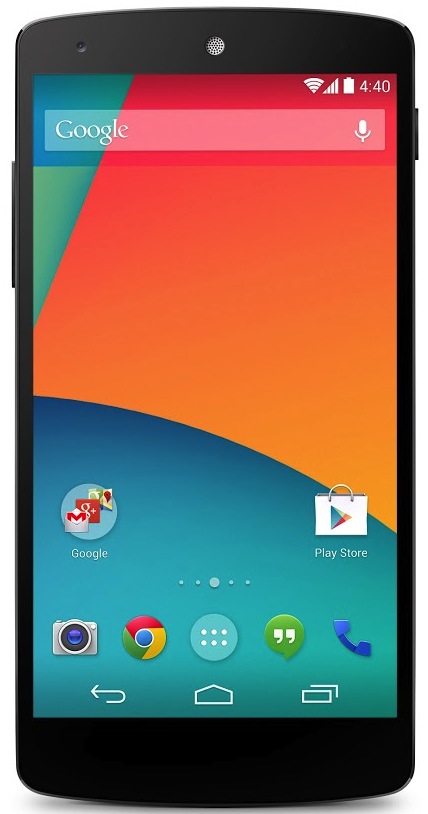 Three months later, Google was back with a design-oriented firmware update that pushed Android up to version 4.4. It couldn't have been timed better. Only a couple of months prior, Apple had released a new version of its iOS platform, called iOS 7 ( our review), with a radical new design. It had a mixed reception; some users admired its stark, flat aesthetic, but others felt Apple's sparse approach was confusing and inconsistent.
Three months later, Google was back with a design-oriented firmware update that pushed Android up to version 4.4. It couldn't have been timed better. Only a couple of months prior, Apple had released a new version of its iOS platform, called iOS 7 ( our review), with a radical new design. It had a mixed reception; some users admired its stark, flat aesthetic, but others felt Apple's sparse approach was confusing and inconsistent.
Google changed Android's aesthetic for version 4.4, but the adjustments were smaller and less abrasive. Nevertheless, it was a huge step forward: Android suddenly looked cleaner and lighter, which helped it to shed its long-held image as a function first, form second mobile OS.
Google quietly refined the look and feel of Android, while Apple gave iOS a complete overhaul. These two approaches contrasted one another, but were arguably justified given the state of their respective platforms. Even so, it meant that the perceived gap in design for both platforms had suddenly narrowed, making Android even more competitive.
Android 4.4 also introduced a few feature updates too, such as an even smarter version of Google Now, SMS and MMS integration for Google Hangouts, and an improved phone app that lets you search for local businesses. None of these were particularly revolutionary, but it came together as the most powerful, useful and up-to-date Android release ever.
Android's meteoric rise resulted in a wave of new activations too. Over 1 billion in fact, which Google's Sundar Pichai revealed in September alongside the Android 4.4 'KitKat' partnership. Three months on, that figure will have no doubt risen even further.
Next: Nexus and Google Play edition devices
Nexus and Google Play edition devices
This year, a tremendous number of high-end Android smartphones and tablets were released. Each of them offered a slightly different user experience, catering to everyone regardless of the form factor, hardware or software they were looking for. To some extent, this has always been the case with the Android ecosystem - the platform is open source, after all - but 2013 was notable in particular for the sheer quality and pedigree of devices that entered the market.
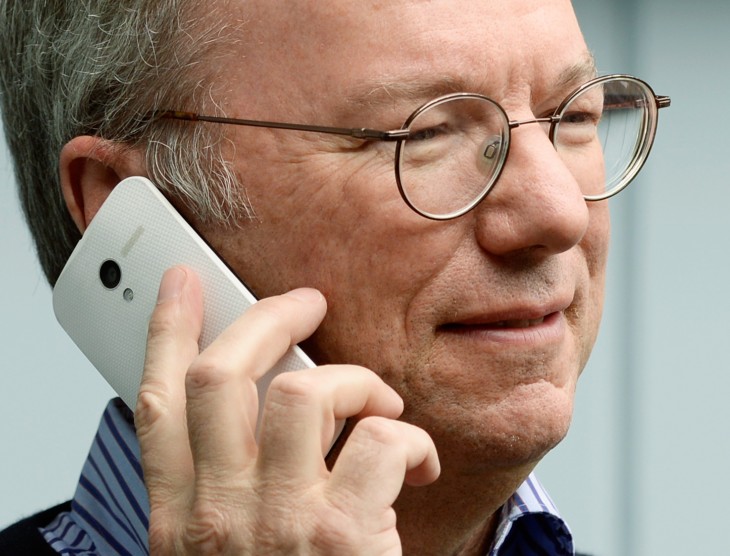
A quick rundown of the highlights; Motorola's Moto X; the Samsung Galaxy S4, S4 Active and Galaxy Note 3 ( our review); the HTC One ( our review), One Max and One Mini; the Sony Xperia Z ( our review), Z Ultra and Z1; and the LG G2.
All of these devices, in at least some small fashion, helped to drive the adoption of Google's mobile platform around the world. Yet for the diehard Android crowd, it was arguably the Nexus line and new Google Play edition devices that were most exciting and innovative.
The Nexus 4 ( our review) co-developed by Google and LG was a popular device when it launched in November 2012. It appealed to Google's most loyal followers for a few reasons: the hardware was competitive, it was a respectable price off-contract and ran the unadulterated, 'stock' version of Android.
There were a few quibbles with the Nexus 4 though, such as its lack of LTE connectivity and its glass back panel, which, while gorgeous to look at, had a tendency to crack from only the slightest drop.
Nevertheless, when the Nexus 5 was unveiled in October, Android enthusiasts rejoiced. Visually, it was a safe and unassuming device, but what Google had created was powerful, practical and unique. For starters, it was the first device to ship with Android 4.4, sporting Google's all-new firmware and software. Yet it also had a matt plastic black, making it more durable than the Nexus 4, LTE connectivity, and a 2.3 GHz quad-core Qualcomm Snapdragon 800 processor.
A few months prior, Google had teased this new design roadmap with an updated version of its Nexus 7 tablet. The device wasn't particularly original, but it was clear that Google had taken the right pointers from Apple's iPad mini. The Nexus 7 (2013) was slim and comfortable in the hand, with a gorgeous 1920×1200 IPS display. That put Android 4.3, a firmware update that Google released simultaneously, in the best possible spotlight. Furthermore, the all-new Nexus 7 was sold from $229, undercutting Apple's smaller slate.
The Nexus 5 and new Nexus 7 would have been enough to tide Android users over for 2013, but Google didn't stop there. Earlier in the year, the company unveiled 'Google Play editions' of the HTC One and Samsung Galaxy S4. Somehow, Google had persuaded both companies to offer the two devices without their divisive Android 'skins.' They were only available in the Google Play store for US customers, but it was another set of products that could showcase the very best of Android.
Many wondered if the two handsets were a one-off, or if Google planned to released other devices that were already on the market in a stock Android flavor. Well, those questions were answered with the recent launch of the 'Google Play edition' Sony Xperia Z Ultra and LG G Pad 8.3. Again, they're only available in the US for now, but it'll be interesting to see whether Google expands the program to international markets.
Google doesn't give out sales numbers for its Nexus or 'Google Play edition' portfolio, so it's difficult to know just how successful these devices have been. Nevertheless, this year they had a notable impact on the public's perception of Android. Google's best software experience, coupled with premium hardware from some of the industry's best manufacturers. It was a love letter to the platform, and one that has probably earned Google a few new fans.
Google+
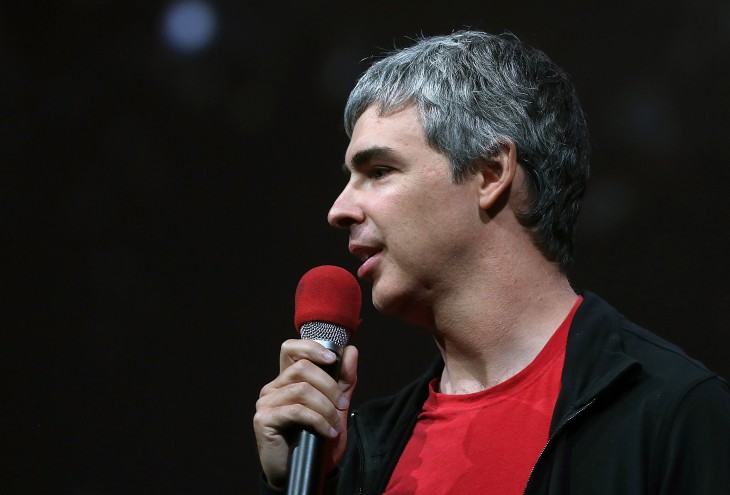
In 2012, Google CEO Larry Page described Google+ as the ' social spine ' for all of the company's Web-based offerings. It was a clear indication that the social network would soon be linked and integrated with a broader range of products and services. Google continued to realize that plan in 2013, enduring a fair amount of user backlash in the process.
The year kicked off with a significant expansion of the Google+ for iPhone and iPad apps, with available for 48 new markets around the world. While none of these represented a huge market for new users, it did emphasize Google's desire to make Google+ a global and mobile service.
We covered the story on TNW and reader feedback was, perhaps unsurprisingly, pretty mixed. To quote one comment, submitted by Tim Acheson:
'Google is pathogically obsessed with Google+ - a platform which even the corporation's own staff barely use. But people are not moving from Reader to Google+ - instead they are moving directly to rival platforms. Google failed to take these rivals seriously, but they're now hoovering up loyal and regular users, taking them away from Google which frankly does not deserve them.'
Google then introduced Google+ comments to its Blogger service. It meant readers could leave a response using their Google+ account and also share that comment on Google's social network. The move helped to establish Google (and by extension Google+) accounts as the default registration and log-in method for Web-based services. It also pulled new content over to Google+, populating the platform with some much-needed user engagement.
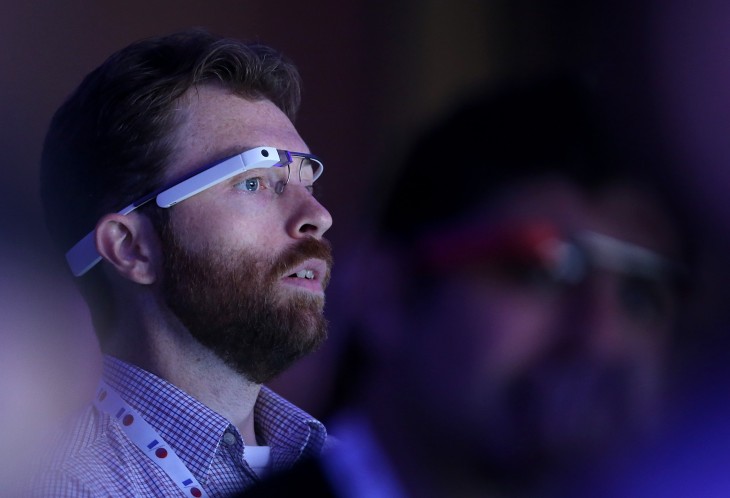
Google Glass - the company's futuristic head-mounted computer - is still without a public release date, but in 2013 it received support for Google+ notifications. It included comments, mentions, and direct shares, while giving users the ability to comment and +1 other users posts. It's hard to predict how this integration will impact the hardware, but if Google Glass takes off in 2014 (more on that a little later), it could have a profound effect on the popularity of the social network.
One of the more interesting facets of Google+ is its advanced photo-editing features. Since its inception, Google+ has always straddled the middle ground between advanced storage solutions such as Flickr and accessible social networks such as Facebook. In April, Google made a beeline for the former with full-size photo uploads from the desktop, tempting both amateur and professional photographers alike.
That trajectory continued at Google's annual I/O conference in May. Among the company's long line of product and service announcements was a huge update for Google+, which introduced a new three column-wide grid to the Web, new animations and automatic hash-tags based on post content.
A nice aesthetic overhaul, but it was the advanced photo-editing features that really impressed. Google debuted Auto-Enhance, which adjusted the brightness, contrast and other photographic elements of users' shots automatically. Magic is an overused term in technology, but it's difficult to describe the feature any other way. Post-processing, usually reserved for premium software such as Adobe Photoshop, was now available to the masses. Better yet, users were able to get the results without lifting a finger.
Auto-Awesome was arguably even more impressive. Google was now able to take multiple images, linked either by photo metadata, and combine them to create composite images. This enabled animated GIFs, high-dynamic-range (HDR) images, panoramas and more. It wasn't possible to manually edit these effects, but it was a surprising, joyful gift for anyone using Google+ as their default photo storage solution.
The update also included Auto-Highlight, which offered a small selection of users' best shots, and Auto Backup, which uploaded shots taken on a smartphone or tablet to Google+ automatically. For budding photographers, Google even threw in 15GB of free storage for full-resolution photographs.
The roll-out of Google+ announcements slowed over the summer months, but in retrospect it was clear that Google was saving them for a high-profile Google+ event in October. Vic Gundotra, Senior Vice President for Social at Google, took to the stage to unleash another wave of updates for the platform. This included an extension of its 'deep learning' search engine, which meant users could look up photos using 1,000 new keywords, optional low and high Auto-Enhance settings, and two new Auto-Awesome tools centered on action shots and removing unwanted distractions.
Google also used the event to introduce video-editing to Google+ for the first time. The new feature, called Auto-Awesome Movie, pulls together users' photos and video clips to create a short montage automatically. The user can tweak the backing track, filters and editing style, but as with other Auto Awesome editing tools it's a rather hands-off affair at the moment.
It was a big year for Google+ and that contributed to a significant spike in engagement. At its October event, Gundotra said Google+ was up to 540 million monthly active users - those logging in and accessing the service at least once every month - and 300 million users accessing the Home Stream in the same time period. At the time, Google+ users were uploading 1.5 billion photos every week; since then, that number will have only increased.
A week later, Google launched a new commenting system for YouTube, powered by Google+. Google had announced its intentions in late September, but it wasn't until November that the changes were visible to all of it users. The new system, to put it mildly, was fairly divisive.
The underlying idea was admirable. Google wanted to make YouTube comments more relevant by bringing those posted by the video's creator, or those listed in viewers' Google+ Circles, to the top of the feed. In turn, this would help to bury irrelevant, or negative comments that are often shared by complete strangers.
The initial outcry appears to have subsided now, but it's clear that a significant subset of Google's users are still opposed to the growing outreach of Google+. It's difficult to predict if that will change over time, but it's not as if Google is hiding its intentions: Google+ will soon be the social fabric for all of its products and services. It's just a matter of when and how.
YouTube

If we put the Google+ powered commenting system aside, YouTube had another tremendous year. The platform has no equal really, and continues to be the default home for uploading, sharing and viewing videos on the Web. YouTube originally found its footing with a grassroots movement of everyday vloggers, but it's now a place for broadcasters, studios, musicians and brands to showcase their content and have it seen by as many eyeballs as possible.
Google didn't change the YouTube formula this year and in many respects, it didn't need to. While many channel owners will always have a small bucket list of technical problems and suggestions, the user experience is now pretty slick. Increasingly, Google's focus appears to have shifted toward nurturing new content and ensuring that fresh talent (and brands) continue to flock to the service. After all, without new videos YouTube quickly stagnates.
On the creator side, Google launched YouTube Pro, a new video series where fledgling channel owners can learn tips and tracks from established YouTube personalities. This covers everything from crowdfunding to linking up with potential new advertisers, and has grown into a useful resource for new users.
Speaking of Chromecast, YouTube supported Google's micro streaming dongle out of the gate, providing users with an effortless way to play content on their TV. It's never been particularly difficult to watch YouTube in your living room - it's available on almost every smart TV, set-top box and video game console known to man - but it's still a tent pole service for Google's petite $35 hardware.
Video responses, unfortunately, were axed from the service in September.
As it stands now, over 6 billion hours of video are watched each month on YouTube - almost an hour for every person on Earth - and over 100 hours of content are uploaded to the service every minute. YouTube's Partner Program, designed to help channel owners monetize their content and gain new exposure, now has over a million members spanning 30 different countries.
Read: Behind the scenes of YouTube's epic 2013 Rewind video Next: Chrome OS/Chromebooks...
To round off the year, YouTube released a 'Year in Review' video featuring some of the platform's most prolific personalities. The most popular video, if you're curious, was ' Ylvis - The Fox (What Does the Fox Say?) ' At the time of writing, it's racked up over 287 million views. That's still a way off the over 1.8 billion hits for PSY's Gangnam Style, but it's an impressive feat nonetheless.
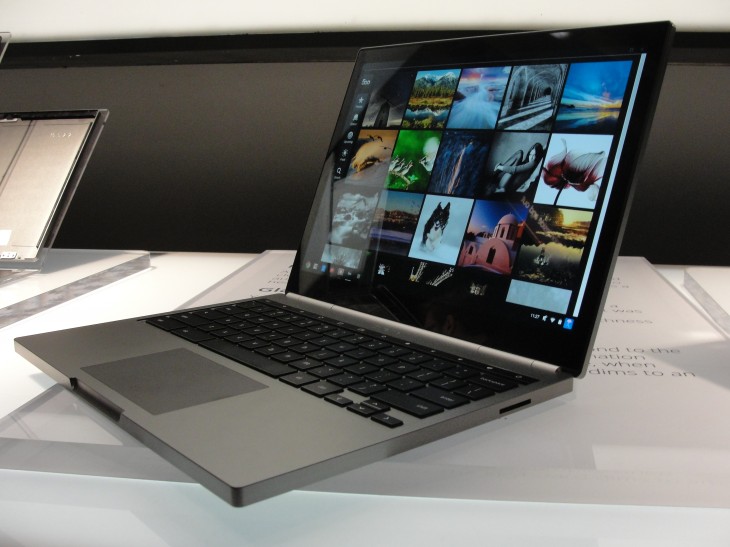
Chrome OS/Chromebooks
Google has a huge foothold in the smartphone and tablet race, but its foray into desktop computing is somewhat more lackluster. The company doesn't give out sales figures for Chrome OS or Chromebooks, but data from the IDC suggests that user adoption is still pretty slow. It's a murky picture though; a Chromebook currently sits atop the laptop bestseller list in the US and UK edition of Amazon's site, pointing to some substantial demand.
It was rumored for sometime, but many questioned its existence. Chromebooks were supposed to be a cheap means of accessing the Web and Google's renowned products and services, such as Gmail and Google Drive. A high-end machine with a price tag to match just didn't make sense, given the broader feature set offered by Windows 8 and Mac OS-powered laptops and PCs.
Yet the Chromebook Pixel was real. Similar to the Nexus line, it was Google's way of showcasing what Chrome OS was capable of, when paired with some of the best hardware on the market. It was certainly desirable, with a beautiful chassis and a pixel-dense, 12.85-inch touchscreen display. Also, the light bar was awesome. If you think otherwise, you're just wrong.
Acer has also been a Chrome OS flag bearer this year, unveiling the Haswell-powered C270 Chromebook in October. It launched a slightly cheaper version a month later, but of greater interest was the C270P, which bundled in a touchscreen for under $300. Google is now pushing the Chromebook brand with some bright, vibrant marketing campaigns, but it remains to be seen what impact they have on sales. Regardless, it's certainly put Microsoft on the defensive, after it used a series of video ads to attack the platform.
Google pushed Chrome OS forward in 2013, but the platform still has plenty of room to grow. In the coming year, it'll be interesting to see how Google develops the Chrome OS, and if it can establish the platform as a true competitor to Windows 8.1 and Mac OS X.
Chromecast

Google TV has been around since October 2010, but it's never found the foothold or traction needed to break into living rooms around the world. The platform still lives, albeit in a low-key state, but earlier this year Google took a vastly different approach with the Chromecast.
The mission was simple: To put the Chrome browser and online video content on consumers' TV sets, as simply and cheaply as possible. The result was Chromecast, a $35 HDMI dongle that lets users 'beam' content across using services such as Netflix and Hulu.
The app selection is low at the moment, but post-launch we've seen some notable services such as Pandora, HBO GO, VEVO and Songza introduce support for the tiny device. Chromecast is only available in the US and Canada at the moment - despite Amazon offering international orders for a short while - but we're hopeful Google will introduce it to other markets sometime in 2014.
Google Play Music All Access
Other services
 Google Keep
Google KeepGoogle has an enormous range of products and services in development, and to go into each in turn we would need to extend this feature into a HBO-produced mini-series. In the interest of time, we're going to highlight some of the standouts projects that Google launched or updated in 2013:
For a few years, Google has offered an online music download service similar to iTunes, as part of the Google Play storefront. Consumers are now moving towards on-demand streaming services such as Spotify and Rdio, so it was only a matter of time before Google introduced its own take.
Google Hangouts
Google Keep is a simple note-taking service for Android, the Web and Chrome OS, offering brightly colored virtual post-it notes for jotting down quick thoughts. It also supports time and location-based reminders, the latter of which can be particularly useful for restaurants, stores, a college campus or the office.
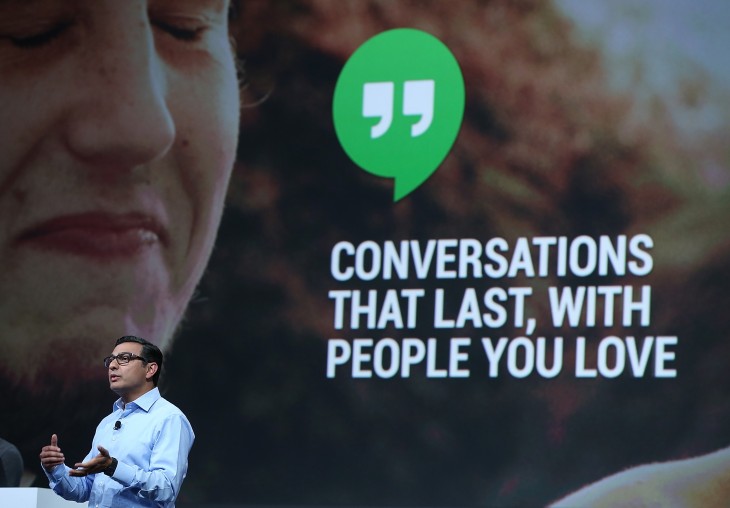
It's a simplistic service for now, far-removed from a competitor like Evernote, but that could change rather rapidly in the months ahead.
Google Maps
Messaging apps are red-hot at the moment. Whether it's Snapchat, Facebook Messenger or WhatsApp battling it out in the West, or LINE, Kakao Talk and WeChat vying for market share in the East, few other markets in the app space are quite so competitive at the moment.
Gmail
Google released a new messaging platform called Hangouts at I/O spanning Android, iOS, Chrome, Google+ and Gmail, effectively replacing services such as Google Talk and Google+ Messenger.
Google Maps received a facelift at I/O, with a new design that is cleaner and more informative than before. It's also contextual, showing routes and points of interest whenever you click on a place of interest. The refresh supports multiple modes of transportation, so you can compare them side-by-side, and Google Earth is now available if you're using a WebGL-enabled browser.
Email is often dismissed as a fairly dull part of the tech industry, but Google spent 2013 rolling out some notable updates to Gmail. The most prolific of which debuted in May, with a new desktop experience that filters messages into separate inboxes tagged Primary, Social, Promotions, Updates and Forums.
Google Wallet was also integrated into Gmail in May, and earlier this month Google gave users the ability to download all of their data in the MBOX format, which can then be imported into another email provider of their choice.

Google Glass
Google Glass is arguably the company's most exciting product right now. Google is yet to give out a public release date, but it's now in the hands of an ever-growing group of testers, called Glass Explorers.
Google is now touring the United States with Glass, allowing members of the public to try them on and get a feel for the final retail version. Will we see a public release in 2014? We really hope so.
Cybersecurity
Earlier this year, Google was swept up in the NSA and GCHQ cybersecurity scandal, following the numerous revelations from whistleblower Edward Snowden. The company was listed in the original documents reported on by the Guardian and the Washington Post, but Google quickly responded and said it wasn't participating, or even aware of the PRISM program.

Google's chief executive Larry Page and Chief Legal Officer David Drummong then issued a joint statement clarifying that the company hadn't joined any program that would give any user direct access to its servers.
Eric Schmidt, Google's executive chairman, echoed these views in November and said it would be ' outrageous ' if the NSA had been able to access this information. 'The steps that the organization was willing to do without good judgment to pursue its mission and potentially violate people's privacy, it's not okay,' he told the Wall Street Journal.
Acquisitions and product shutdowns
Over the last 12 months, Google has acquired a wealth of companies, including Boston Dynamics, FlexyCore, Flutter, the design team behind Hattery, WIMM Labs and Channel Intelligence. On the flip side, in 2013 we've also seen the demise of Google Reader, Google Talk, iGoogle, Google+ Local for iOS, Google Latitude, Google Building Maker, Meebo, and SMS search.
Don't miss our other 2013 review articles Check out our Google review from last year: Featured image: Justin Sullivan/Getty Images
Further credits:Josh Edelson/AFP/Getty Images, Kevork Djansezian/Getty Images, Justin Sullivan/Getty Images (2) (3) (4) (5) (6) (7), FREDERIC J. BROWN/AFP/Getty Images, GLENN CHAPMAN/AFP/Getty Images Google in 2012: A year when mobile and social seeds began to shoot roots
...and finally
Before we wrap up, here are some final highlights from the last 12 months to chew over:
I am very greatfull to you as you shared this.I am recently developing associate app what is spotify
BalasHapusthat is you may have an interest to seem on that :
You can get now get this app : Battery Saver for Go Apk
BalasHapus